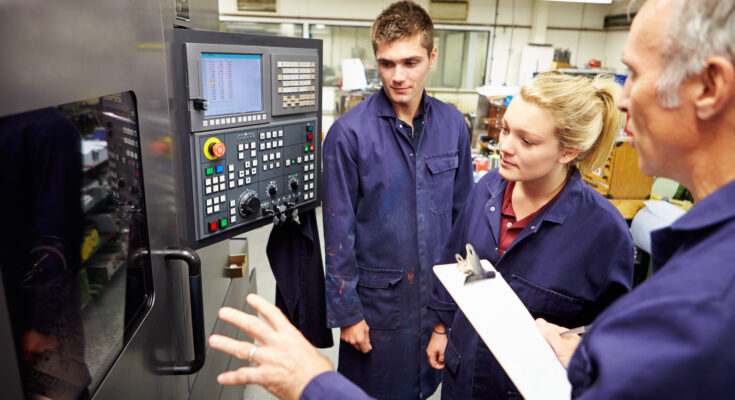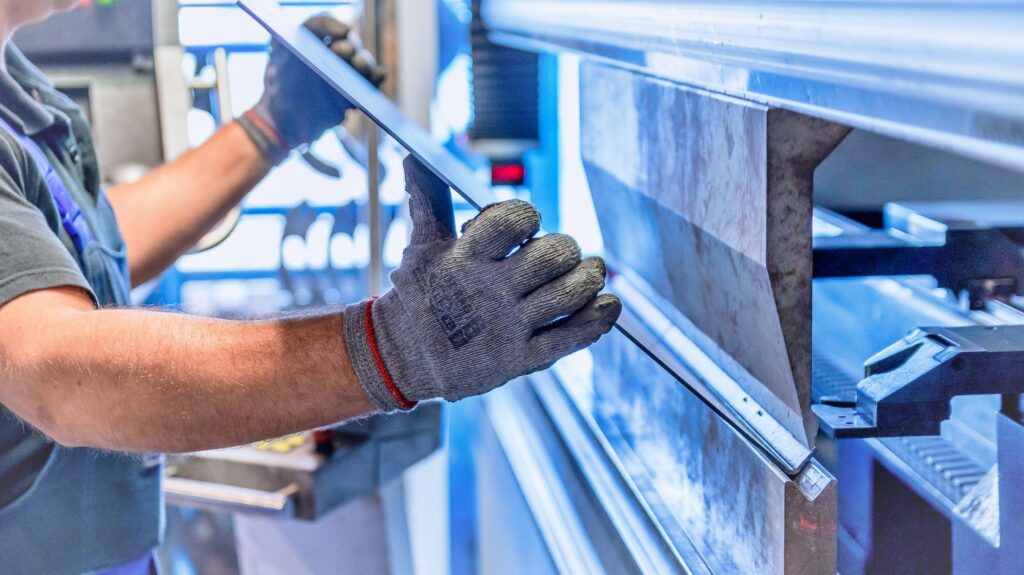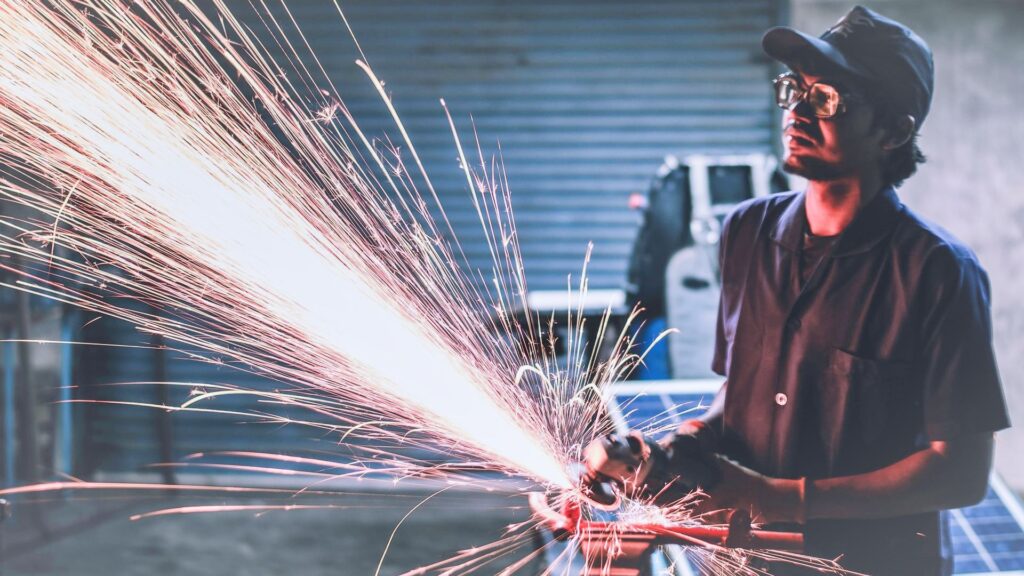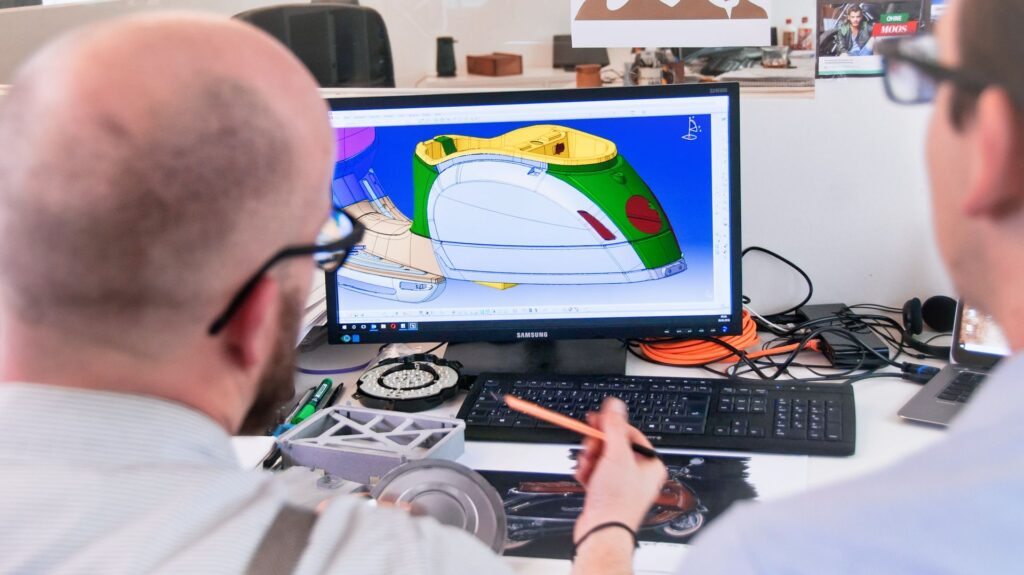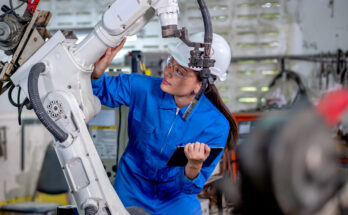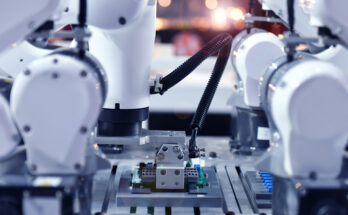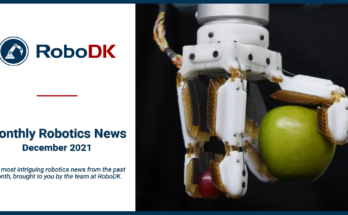Is automation a good way to improve the productivity of your machine shop?
There is a lot of pressure for machine shops to improve efficiency. You want to offer the same services for less cost. Hiring new people is an option, but there are difficulties finding good people to fill the roles.
Is robotic automation suitable? And, if so, how can you get started with machine shop automation quickly and easily?
While automation has been common in manufacturing for decades, smaller machine shops have traditionally been slow on the uptake. Understandably, machine shop owners often assume that automation is only suitable for very high-volume manufacturing because this was always the case in the past.
The tasks that machine shops undertake are very varied. On any given day, you might be producing prototypes of a new design, repairing broken equipment, or even manufacturing small-batch products.
How can you automate tasks in such a variable environment?
Is Automation Really Suitable for Low-Volume Machine Shops?
These days, flexible robotic automation allows machine shop owners to access automation in ways that were just not possible several years ago.
Machine shops are increasingly adopting robotics and other automation to help them improve productivity and efficiency.
Even if you are aware of this trend, you might be uncertain about adding automation to your own machine shop. You might be dubious if robotic automation is really applicable to the needs of your business.
A common reason that people are uncertain about adding robots is that they don’t know what is possible to automate.
As you know, there is a huge variety of manual and semi-automatic machines in any machine shop.
Such machines include:
- CNC machines
- Grinding machines
- Lathes
- Shapers
- Planers
- 3D printers
- … and the list goes on.
You might wonder where robots would even fit among these different machines!
What Opportunities Are You Missing Without Flexible Automation?
The fact is that there are many exciting opportunities for robotic automation in machine shops.
When you start looking for tasks — and you are a little familiar with the capabilities of robotics — you will start seeing opportunities for automation all over the place.
There are 4 classic signs that a task is suitable for robotic automation. You will often see these signs written about in regard to robotics.
The signs are:
- Dull — The task is boring for a human to perform, such as loading and unloading dozens of identical parts into a CNC machine.
- Dirty — The task is dirty and messy for a human to do. This can be unpleasant and adds extra work for people to do the task, such as spray painting products.
- Dangerous — The task is actively dangerous for a human to perform. This could be for obvious reasons, such as working with oxalic acid for anodizing metal, or the danger could come indirectly, such as when repeatedly lifting heavy items during a palletizing task.
- Dear — The task is more expensive when performed by a human, such as paying a person for a whole day’s work to arrange products on trays.
You likely have various tasks in your machine shop that fit these descriptions. The flexibility of modern robots means that they can be applied in many different ways throughout a machine shop.
5 Robotic Tasks That Are Perfect for Machine Shops
Here are 5 examples of tasks that are perfect for robots in a machine shop:
1. Robot Milling
You might think that a robot can never come close to a CNC for milling or other machining processes. However, in some situations, a robot can outperform a CNC machine. Robot milling offers some advantages that are not possible with conventional CNC machines, such as the ability to work with larger workpieces.
2. Machine Tending
Often, a good first robotic task for a machine shop is simply for the robot to tend some of your existing machines. A popular choice is for the robot to load and unload CNC machines. This is the type of task that you can deploy very quickly if you use the right approach.
3. Welding
Welding is one of those dirty and dangerous jobs that are perfect for robotic automation. It has also become increasingly difficult to find skilled welders over the past few years. Using a robot for welding has added benefits over manual welding, including improved weld quality and consistency.
4. Palletizing
Palletizing and depalletizing are necessary tasks for any machine shop. Whether you are unpacking raw materials from a pallet or loading empty pallets with finished products, someone needs to perform this dull, dangerous task. Robots are a superb option for palletizing automation as they cannot be injured by the repetitive nature of the task and they give your people more time to perform higher-value tasks.
5. 3D Printing
Even just a few years ago, 3D printing was reserved for only specialist machine shops. Now, many shops offer additive manufacturing services. Robotic 3D printing is still underutilized by machine shops and offers some additional benefits over conventional 3D printing. Adding a 3D printing robot can really set you apart from your competitors.
The Key to Deploying Machine Shop Automation Quickly
When you have identified some robotic applications that could work for your machine shop… how do you get started?
One of the keys to getting a robot up and running quickly is to choose the right programming system.
When you program your robot efficiently, you can put the robot into production with minimum difficulty.
A good first step is to build a mock-up of your robotic task within a robot simulator. This allows you to see what the application will look like and gives you the flexibility to “play” with the robot to see what solution will be best for you.
What task might be good to automate with a robot in your machine shop? Tell us in the comments below or join the discussion on LinkedIn, Twitter, Facebook, Instagram, or in the RoboDK Forum.

